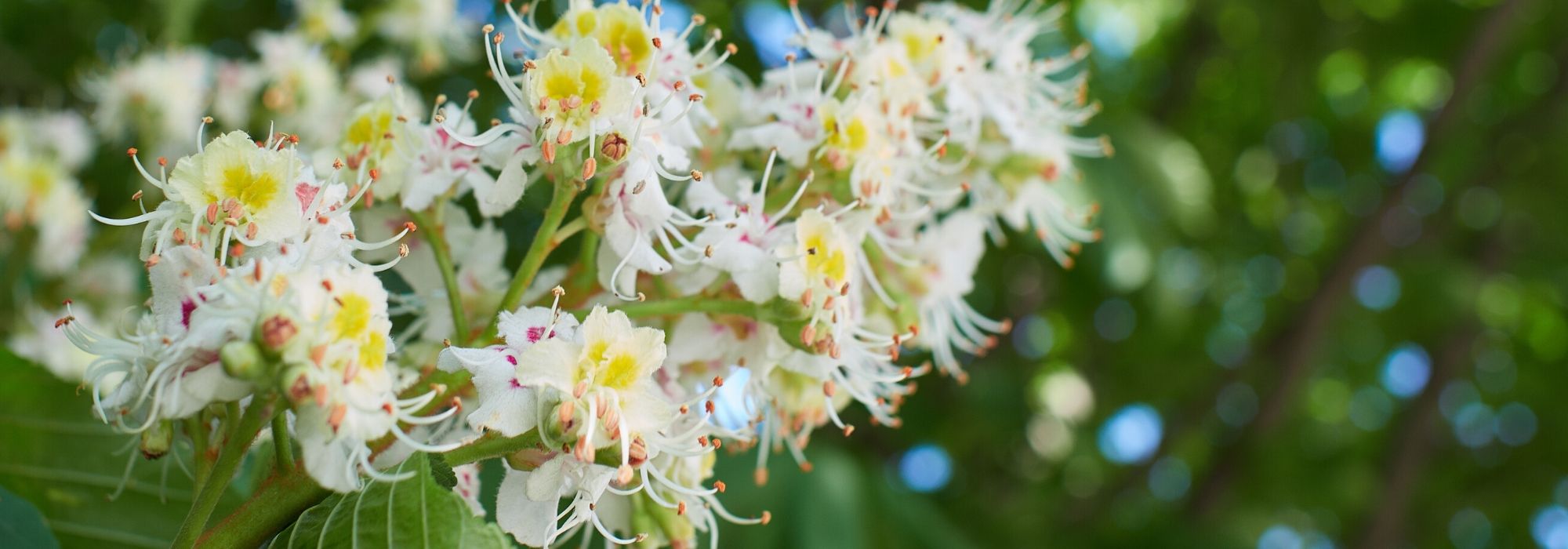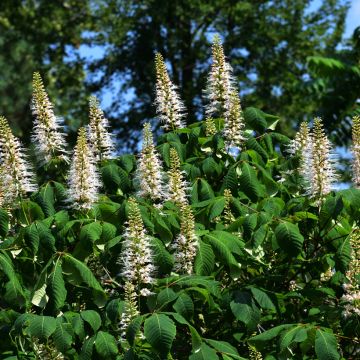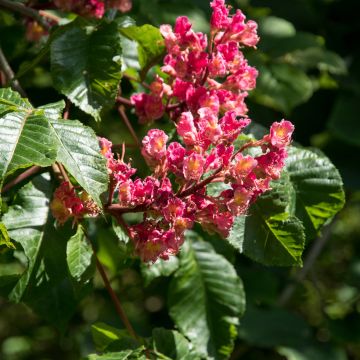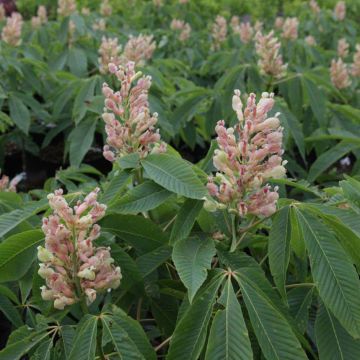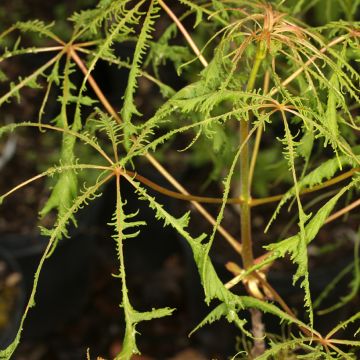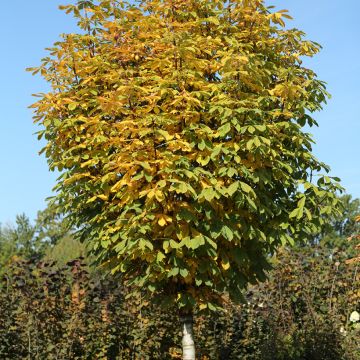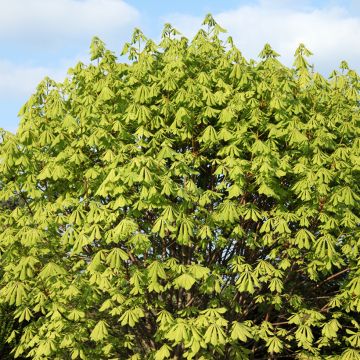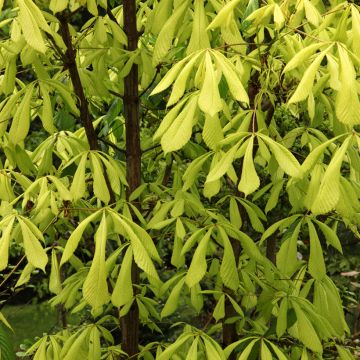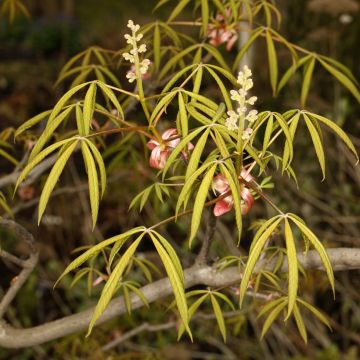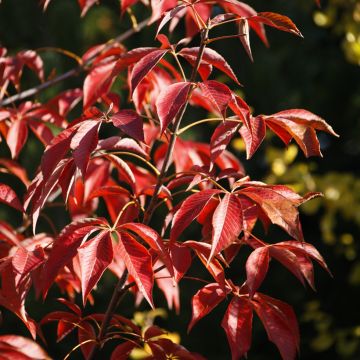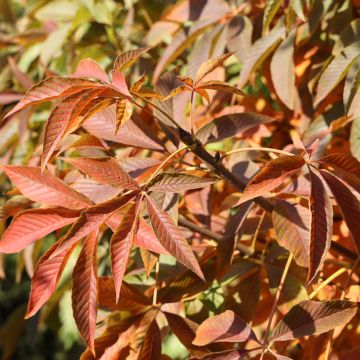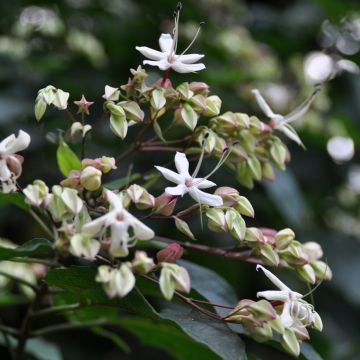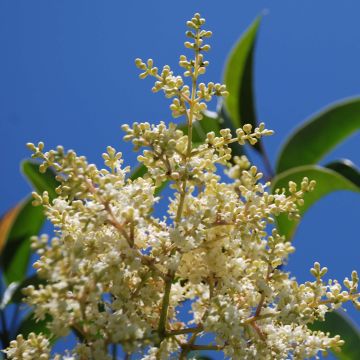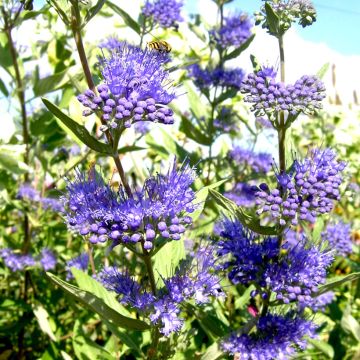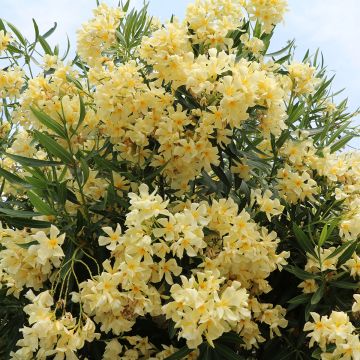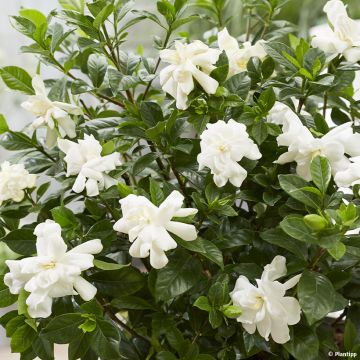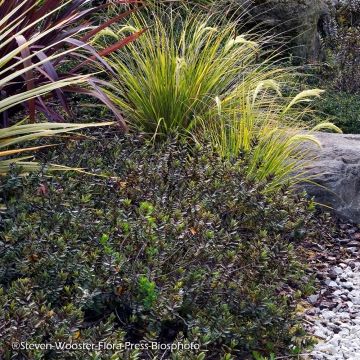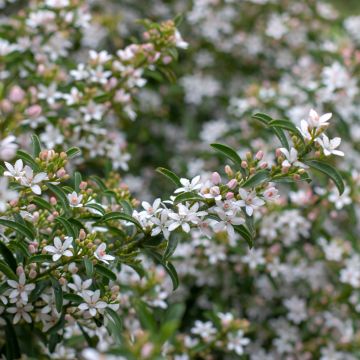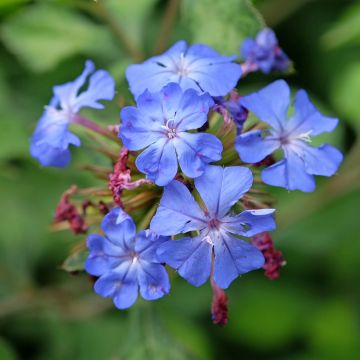

Aesculus pavia Humilis
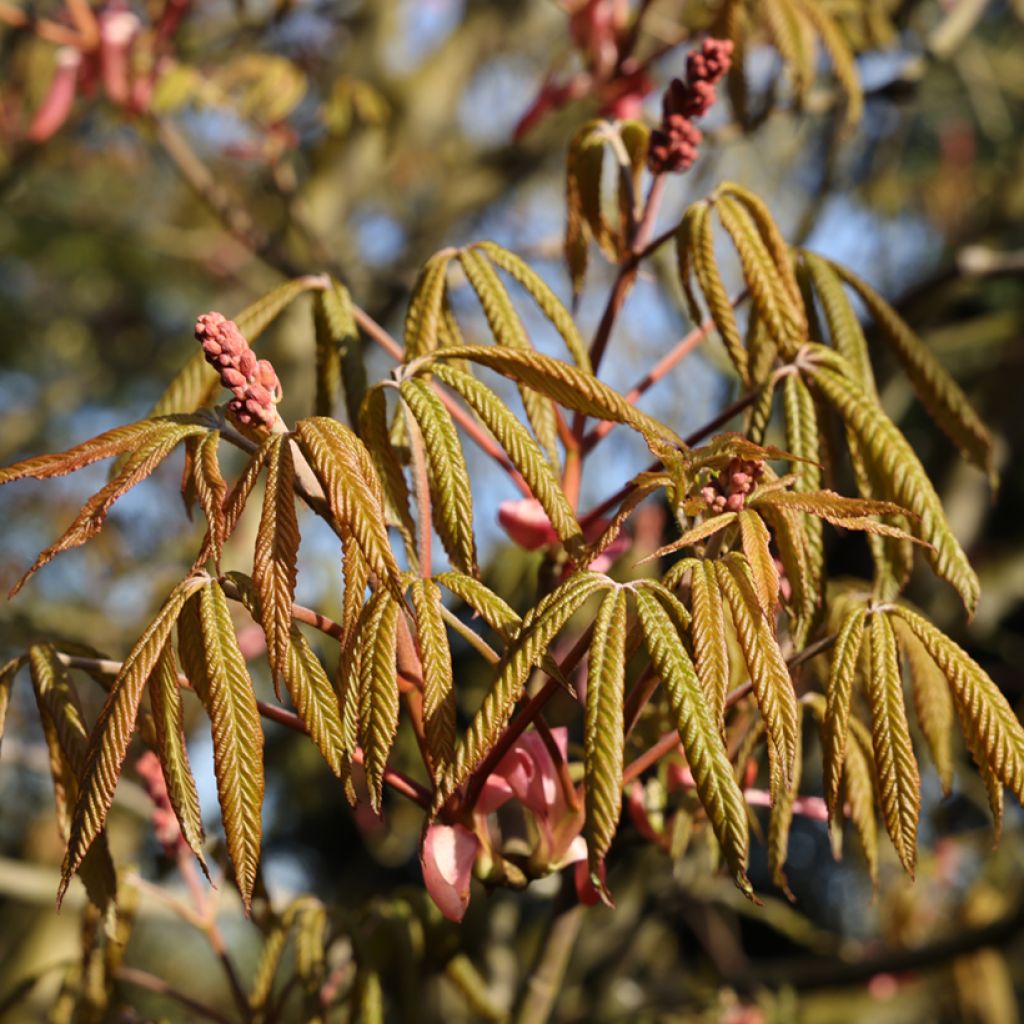

Aesculus pavia Humilis
Aesculus pavia Humilis
Aesculus pavia Humilis
Special offer!
Receive a €20 voucher for any order over €90 (excluding delivery costs, credit notes, and plastic-free options)!
1- Add your favorite plants to your cart.
2- Once you have reached €90, confirm your order (you can even choose the delivery date!).
3- As soon as your order is shipped, you will receive an email containing your voucher code, valid for 3 months (90 days).
Your voucher is unique and can only be used once, for any order with a minimum value of €20, excluding delivery costs.
Can be combined with other current offers, non-divisible and non-refundable.
Home or relay delivery (depending on size and destination)
Schedule delivery date,
and select date in basket
This plant carries a 24 months recovery warranty
More information
We guarantee the quality of our plants for a full growing cycle, and will replace at our expense any plant that fails to recover under normal climatic and planting conditions.
Would this plant suit my garden?
Set up your Plantfit profile →
Description
The Aesculus pavia 'Humilis' is a shrubby form of a large American chestnut tree called Red Buckeye. It offers a beautiful bright red spring flowering, but its upright inflorescences are shorter than those of the species. This small deciduous tree with a dense and more or less prostrate crown is adorned with beautiful palmate foliage, glossy, dark green. Despite its ornamental value, it is not widely planted in our gardens, and its moderate growth is also suitable for small plots. Plant it in full sun or partial shade, where you can admire it from the house, in a cool and rather fertile soil.
The Aesculus pavia 'Humilis' was introduced around 1826 in the U.S.A. The species type Aesculus pavia is a large tree native to the central and southern United States. The cultivar 'Humilis' sometimes forms multiple stems from its stump, and they can be horizontal. Slow-growing, this large, rounded and bushy shrub reaches between 4 m and 4.50 m in all directions. It proves to be hardy and resistant to diseases that have been attacking our large chestnut trees in recent years. Its branches produce smooth, non-sticky buds. Its deciduous leaves are divided into 5 elliptical and oblong leaflets, 10 to 15 cm long, with finely toothed edges, of a glossy dark green. They turn yellow in autumn. The first upright cluster-shaped inflorescences, 10 to 12 cm long, bloom depending on the climate, from the end of May to the middle of June. The small tubular flowers are bright red. The flowering, greatly appreciated by pollinating insects, is followed by the formation of ovoid fruits without spines, containing a single large smooth brown seed. They ripen in September-October. These are toxic fruits if ingested.
The Aesculus pavia 'Humilis' is used as a specimen plant, but also in a shrub bed or in a large mixed hedge. It forms a beautiful combination in rather acidic soil with a large blue-flowered hydrangea like 'Blue Wave', a large rhododendron, and in ordinary soil with the Hydrangea quercifolia, the Neillia affinis, and the Cotinus Royal Purple, for example.
Plant habit
Flowering
Foliage
Botanical data
Aesculus
pavia
Humilis
Sapindaceae
North America
Other Aesculus - Horse Chestnut
View all →Planting and care
The Aesculus pavia 'Humilis' should be planted in spring or autumn in any deep, fertile soil, preferably humus-bearing and non-calcareous, but above all, it should remain moist in summer, in a sunny or semi-shaded position. Deep ploughing is recommended before planting. Allow it plenty of space, as it can reach a width of 4.50 m. Water and mulch to maintain soil moisture. Fertilise in spring. Prune in February by removing old stems. It is not very susceptible to diseases, although it can be a target for June bugs or scale insects, depending on the growing conditions.
Planting period
Intended location
Care
Planting & care advice
This item has not been reviewed yet - be the first to leave a review about it.
Similar products
Haven't found what you were looking for?
Hardiness is the lowest winter temperature a plant can endure without suffering serious damage or even dying. However, hardiness is affected by location (a sheltered area, such as a patio), protection (winter cover) and soil type (hardiness is improved by well-drained soil).

Photo Sharing Terms & Conditions
In order to encourage gardeners to interact and share their experiences, Promesse de fleurs offers various media enabling content to be uploaded onto its Site - in particular via the ‘Photo sharing’ module.
The User agrees to refrain from:
- Posting any content that is illegal, prejudicial, insulting, racist, inciteful to hatred, revisionist, contrary to public decency, that infringes on privacy or on the privacy rights of third parties, in particular the publicity rights of persons and goods, intellectual property rights, or the right to privacy.
- Submitting content on behalf of a third party;
- Impersonate the identity of a third party and/or publish any personal information about a third party;
In general, the User undertakes to refrain from any unethical behaviour.
All Content (in particular text, comments, files, images, photos, videos, creative works, etc.), which may be subject to property or intellectual property rights, image or other private rights, shall remain the property of the User, subject to the limited rights granted by the terms of the licence granted by Promesse de fleurs as stated below. Users are at liberty to publish or not to publish such Content on the Site, notably via the ‘Photo Sharing’ facility, and accept that this Content shall be made public and freely accessible, notably on the Internet.
Users further acknowledge, undertake to have ,and guarantee that they hold all necessary rights and permissions to publish such material on the Site, in particular with regard to the legislation in force pertaining to any privacy, property, intellectual property, image, or contractual rights, or rights of any other nature. By publishing such Content on the Site, Users acknowledge accepting full liability as publishers of the Content within the meaning of the law, and grant Promesse de fleurs, free of charge, an inclusive, worldwide licence for the said Content for the entire duration of its publication, including all reproduction, representation, up/downloading, displaying, performing, transmission, and storage rights.
Users also grant permission for their name to be linked to the Content and accept that this link may not always be made available.
By engaging in posting material, Users consent to their Content becoming automatically accessible on the Internet, in particular on other sites and/or blogs and/or web pages of the Promesse de fleurs site, including in particular social pages and the Promesse de fleurs catalogue.
Users may secure the removal of entrusted content free of charge by issuing a simple request via our contact form.
The flowering period indicated on our website applies to countries and regions located in USDA zone 8 (France, the United Kingdom, Ireland, the Netherlands, etc.)
It will vary according to where you live:
- In zones 9 to 10 (Italy, Spain, Greece, etc.), flowering will occur about 2 to 4 weeks earlier.
- In zones 6 to 7 (Germany, Poland, Slovenia, and lower mountainous regions), flowering will be delayed by 2 to 3 weeks.
- In zone 5 (Central Europe, Scandinavia), blooming will be delayed by 3 to 5 weeks.
In temperate climates, pruning of spring-flowering shrubs (forsythia, spireas, etc.) should be done just after flowering.
Pruning of summer-flowering shrubs (Indian Lilac, Perovskia, etc.) can be done in winter or spring.
In cold regions as well as with frost-sensitive plants, avoid pruning too early when severe frosts may still occur.
The planting period indicated on our website applies to countries and regions located in USDA zone 8 (France, United Kingdom, Ireland, Netherlands).
It will vary according to where you live:
- In Mediterranean zones (Marseille, Madrid, Milan, etc.), autumn and winter are the best planting periods.
- In continental zones (Strasbourg, Munich, Vienna, etc.), delay planting by 2 to 3 weeks in spring and bring it forward by 2 to 4 weeks in autumn.
- In mountainous regions (the Alps, Pyrenees, Carpathians, etc.), it is best to plant in late spring (May-June) or late summer (August-September).
The harvesting period indicated on our website applies to countries and regions in USDA zone 8 (France, England, Ireland, the Netherlands).
In colder areas (Scandinavia, Poland, Austria...) fruit and vegetable harvests are likely to be delayed by 3-4 weeks.
In warmer areas (Italy, Spain, Greece, etc.), harvesting will probably take place earlier, depending on weather conditions.
The sowing periods indicated on our website apply to countries and regions within USDA Zone 8 (France, UK, Ireland, Netherlands).
In colder areas (Scandinavia, Poland, Austria...), delay any outdoor sowing by 3-4 weeks, or sow under glass.
In warmer climes (Italy, Spain, Greece, etc.), bring outdoor sowing forward by a few weeks.






























